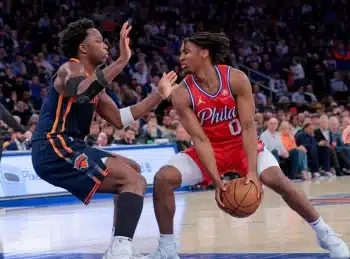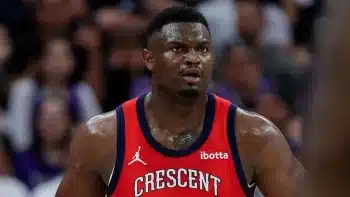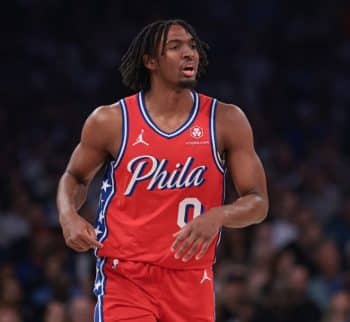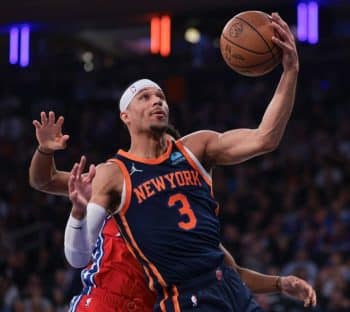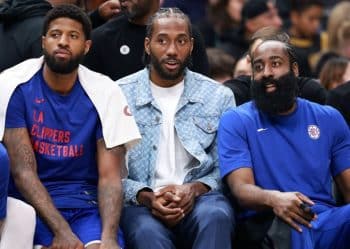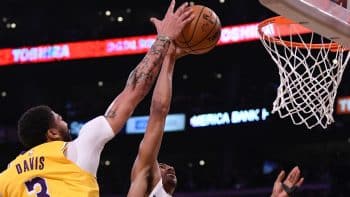NBA
NBA PM: Dwight Howard Has Big Shoes to Fill in Atlanta

There were a number of notable moves this offseason, but one that hasn’t seemed to generate a lot of buzz is Dwight Howard taking his talents to Atlanta. The Hawks landed Howard with a three-year, $70 million deal in the early stages of free agency.
At the time Howard agreed to sign, Al Horford, the Hawks’ incumbent center, was considering his free agency options. Horford ultimately decided to sign with the Boston Celtics, leaving the only NBA team he has played for in his nine-year career and the center position all to Howard. Horford joins an up-and-coming Celtics team that has a strong core of young talent, a treasure chest of assets to use in trades and one of the brightest young coaches in the NBA in Brad Stevens.
The question yet to be answered is whether Howard can effectively replace – or even surpass – Horford’s production in Atlanta as the team’s starting center.
Firstly, it should be noted that Howard simply isn’t the same player he was in his prime Orlando Magic years. In the 2008-09 season, Howard averaged 20.6 points, 13.8 rebounds, 2.9 blocks, 1.4 assists and one steal, while shooting 57.2 percent from the field. He also won the Defensive Player of the Year award three times in a row (2008-09, 2009-10, 2010-11) and was one of the most physically imposing players in the entire NBA. Howard also never missed more than four games in his first seven NBA seasons, but has missed an average of 17 games each season over the last four campaigns.
While Howard isn’t the iron man he once was and he isn’t able to dominate the box score as he used to, he is still a valuable contributor when healthy and engaged. Last season, Howard averaged 13.7 points, 11.8 rebounds, 1.6 blocks 1.4 assists and one steal in 32.1 minutes per game. Those numbers are pretty solid for a starting center and could improve if Howard embraces the Hawks’ style of play and his potential role within it. Howard isn’t Horford, so the Hawks will have to adjust the way they play on both ends of the court, but Howard could find himself in a beneficial position if he plays ball.
The Hawks make their living by passing the ball at a high rate and finding open shooters on the perimeter, mixed in with Paul Millsap shooting from midrange and around the rim (with Millsap occasionally stretching out to the three-point line). Howard doesn’t have a midrange jumper, but he can dive to the basket hard off of pick-and-rolls, making himself a big target that will draw help defenders to the rim. Ideally Howard will have an easy opportunity to score at the rim or wide open teammates on the perimeter to pass to, or failing that the ball handler can simply use Howard as a decoy and find an open shooter himself.
This is a staple for every NBA team with a decently athletic big man who can roll hard to the rim and generate gravity. This is also part of the strategy that Stan Van Gundy used to power the Orlando Magic’s offense years ago when Howard was at his best. However, Van Gundy also utilized Howard as a back-to-the-basket center, allowing Howard to post up often in the paint. Howard was never great at this, but was good enough that teams would send help defenders. At this point in his career, opposing defenses are going to force Howard to score one-on-one more often than not, so it makes more sense to utilize Howard in the pick-and-roll. However, Howard isn’t always a willing participant when it comes to this. Last season, Howard only finished pick-and-rolls on 9.3 percent (91 possessions total) of all of his offensive sets, according to Synergy data, which is surprisingly low. By comparison, Horford engaged in the pick-and-roll on 24.7 percent of his offensive possessions (301 possessions total).
Howard needs to be a willing participant in pick-and-roll sets with Dennis Schröder and dive hard to the basket, which will make him a target at the rim and should open up his teammates on the perimeter. Most importantly, Howard can’t pout and lose focus when the Hawks’ offense is being orchestrated primarily on the perimeter. Howard likely won’t be the focal point on the Hawks’ offense, but by being a strong roll-man and fighting for offensive rebounds and putbacks, he could start to rebuild his reputation as one of the league’s more effective all-around centers.
Beyond simple pick-and-rolls, Howard should also benefit by playing alongside Millsap. Millsap is still one of the most underrated power forwards in the league and is one of the best passing big men in the entire game. He can stretch the court with his ability to knock down three-pointers, which means he and Howard shouldn’t encroach on each other’s space offensively. Millsap will be the best power forward Howard has ever played alongside, and if he can recreate even part of the chemistry Horford had with Millsap, he should benefit from that dynamic as well.
Howard should also slot in well next to Millsap defensively. Millsap is one of the best rim protectors at the power forward position, while still mobile enough to match up with smaller players on the perimeter. By adding Howard to the frontcourt, Millsap should be able to stay closer to stretch-fours looking to draw the Hawks’ big men away from the rim. Allowing Millsap to get out on the perimeter more frequently should be a boost for the Hawks considering Millsap’s unique ability to strip the ball from opponents.
“Paul just has a great feel for it,” Kyle Korver said in April. “He’s probably the best big in the league as far as being able to strip down and get steals. It’s tough when a guard is coming off a pick-and-roll, and you’ve got someone way up in there slapping down at the ball. That’s a big part of our defense.”
Hawks head coach Mike Budenholzer also acknowledged Millsap’s unique skill.
“He’s amazing on the perimeter with his hands,” Budenholzer said. “It’s just one of his best weapons. We do a few things on activity with hands, and we teach a little bit, but it’s 99.9 percent him and his natural instincts.”
However, Horford and Millsap had established a strong chemistry defensively that was a big part of the Hawks overall success. Both were extremely effective trapping and containing opposing ball-handlers without getting out of position, and were generally able to rotate back to the original defensive assignment. This was a fundamental part of the Hawks’ tough defense, which requires intelligent players to execute effectively. Howard is still an effective rim protector, but now he will also have to coordinate with Millsap to maintain at least part of the Hawks’ high risk, high reward defensive system. It won’t happen overnight, but if it does come together eventually, it could help the Hawks maintain one of the better overall defenses in the NBA.
In Atlanta, Howard has the opportunity to shed the distractions and disappointing play of the past few seasons. He won’t be able to replace Horford’s shooting or the goodwill Al had built up in Atlanta over the last nine seasons, but he can be the effective rebounder, rim protector and rim-running pick-and-roll man the team has needed the last few seasons. How well Howard will ultimately fit in to the Hawks’ schemes will come down to how much he is willing to buy into specific roles he hasn’t always embraced in the past.
